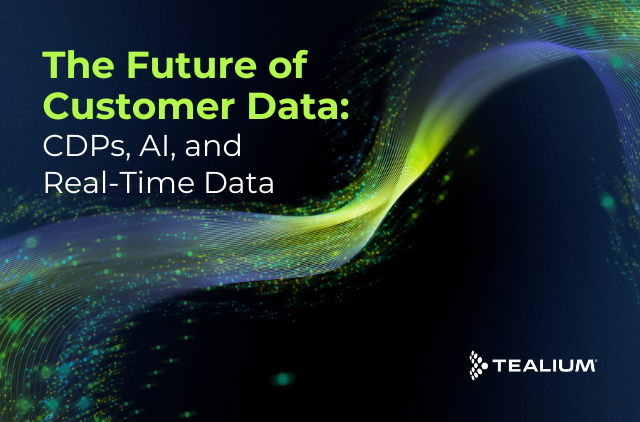Privacy has become synonymous with good customer experiences, which means it is integral to the marketing strategies that brands design. Great customer experiences hinge on personalization which in turn hinges on good data, so these strategies are completely intertwined. Personalization requires marketers to collect and analyze data, but data privacy is often perceived as an obstacle that restricts these practices.
In the recent session of our masterclass webinar series on “Preparing for Life Beyond the Third-Party Cookie,” we dive into how to use first-party data to prioritize privacy and build long-lasting customer trust and strategies for increasing authenticated visits through a strong value exchange.
Keep reading as we dive into the data privacy landscape and actionable tips on how to prepare for all that is still to come or catch up on all the on-demand sessions here.
Speakers include: Matlie Maraj, Senior Counsel; Julian Llorente, Director of Product, Data Privacy; and Ted Sfikas, Regional Vice President, Solution Consulting, NA & LATAM at Tealium.
Data privacy is not static
Data privacy is not a new concept. In fact, we started seeing national privacy laws as early as 1973 when Sweden enacted the Data Act. Several years later, the European Data Directive in 1995 came into effect. Since then, new privacy laws and regulations, including the General Data Protection Regulation (GDPR) in the EU, and individual state privacy laws in the United States such as the California Consumer Privacy Act (CCPA) have set the standards for consumer rights regarding their data.
As you can see, data privacy regulations are constantly evolving, as should your strategy for adapting your business around privacy requirements. New and changing regulations will continue to impact how data can be collected and used by brands. It is the job of brands today to keep track of the changes happening in order to not only avoid large fines, and prevent costly public relations events, but build strong first-party relationships with their customers.
Your strategy for adapting your business around privacy cannot be “set it and forget it.” It should always be evolving.
A strong value-exchange is a must-have
With the loss of third-party cookies, brands must look for new ways to tackle digital advertising. While many view this as a challenge, it also presents a unique opportunity for brands to build long-lasting relationships with their customers. Establishing a strong value exchange is key to obtaining the consent required to drive your marketing efforts in an efficient and trustworthy way.
Today, the first time you visit a website often looks something like this: You land on the first page, and almost immediately a consent management banner appears, asking to collect and track your data prior to you knowing if you are interested in a service or product this company offers. Sound familiar?
While this practice is not wrong, incorporating the user journey in your ask for consent can prove to be transformative in not only receiving that consent, but creating a foundation of trust with consumers.
Consider existing interactions visitors take when coming to your website where they actively provide their personal information (such as downloading a whitepaper, submitting a feedback form, newsletter subscriptions, etc.). These are all relevant steps to ask for just-in-time consent. Within this banner or pop-up, provide clear context around what data you are collecting, how you will use and protect it, and perhaps most importantly, the benefit the consumer receives should they decide to opt-in. Because this first-party comes directly from the individual, it is more accurate, better quality data you can leverage to power personalization and improve customer experiences.
How to prepare for impending digital marketing and regulatory changes
When thinking about privacy and the value exchange, there are three key things to keep in mind that will enable you to more easily comply with legislation and still meet customer expectations.
1. Centralize the Architecture… Before any technology platform consumes it
In the past, it was common to see consumer data flowing to numerous technology platforms independently. Naturally, this led to data silos. In today’s privacy environment, the risk of continuing in this manner is too high as data will be lost, duplicated, or inaccurate. It is imperative to centralize customer data, prior to sending it to any of your technology endpoints.
Enter the role of the Customer Data Hub. With a Customer Data Hub (CDH), all data flows to the center first, improving efficiency and predictability vastly. The CDH acts as the governing entity that receives consumer data, including consent parameters, from both digital and offline touchpoints and is the mediator of all decisions that will be made on consumer data. This is where it is decided what data is kept, what data is secured, and what data needs to be governed according to a value exchange that took place. A Customer Data Hub first and foremost, enables businesses to more easily comply with privacy regulations while also solving silo-based inefficiencies once and for all.
2. Use a first-party approach
With the loss of third-party cookies, cross-domain tracking capabilities and accurate attribution are severely limited, if not eliminated altogether in some cases. Adapting quickly to a first-party approach is the only way forward.
A “first-party approach” refers to the strategy in which a business owns the responsibility and the technology that is used to collect customer data and build customer profiles. This means establishing the collection of all consumer data in only your owned and operated domains. Data is not being bought from unknown sources and you are not allowing technologies you do not own to collect data either. Because first-party data comes directly from consumers with their explicit consent, it is compliant, trusted, and more accurate.
3. Automate
Last but certainly not least – automate! It’s not enough to govern centrally and switch to a first-party approach – we must automate the entire data supply chain that we are building so that the customer profile is forming and changing in real-time.
Automation, regardless of industry, is a means of lowering cost and mitigating risk – and that rings true here. In order for digital marketers to reach the threshold of excellence they are tasked with achieving, we can no longer wait days for segmentation of customer data to occur. Automating the data supply chain from end-to-end, from the moment that customer data surfaces to the moment it is delivered to other technologies that need it for their fuel is of paramount importance.
Just automating is not enough – automation must be in real-time. Not just because this is what consumers expect in 2021 and beyond, but because when consumers make Data Subject Access Requests (DSAR) according to privacy laws, such as the right of rectification, the right of access, and the right to erasure, the standard is that you have the most real-time view of their profile. As Ted Sfikas, Regional Vice President, Solution Consulting, NA & LATAM stated in the masterclass, “Automation needs to be in real-time. Not just because of personalization, but because privacy demands it.”
Did you miss a masterclass or simply want to learn more about life after the third-party cookie? Don’t worry, you can watch the full series on demand at any time to learn more about how to better prepare for third-party cookie loss.
Get a personalized demo to see first-hand how Tealium can help you keep up with the ever-changing privacy landscape, automate the data supply chain, and deliver delightful customer experiences.







